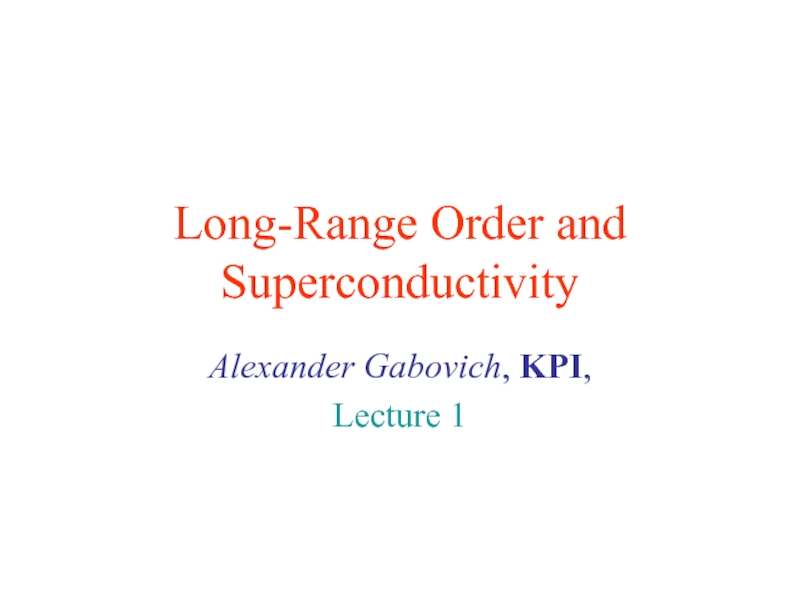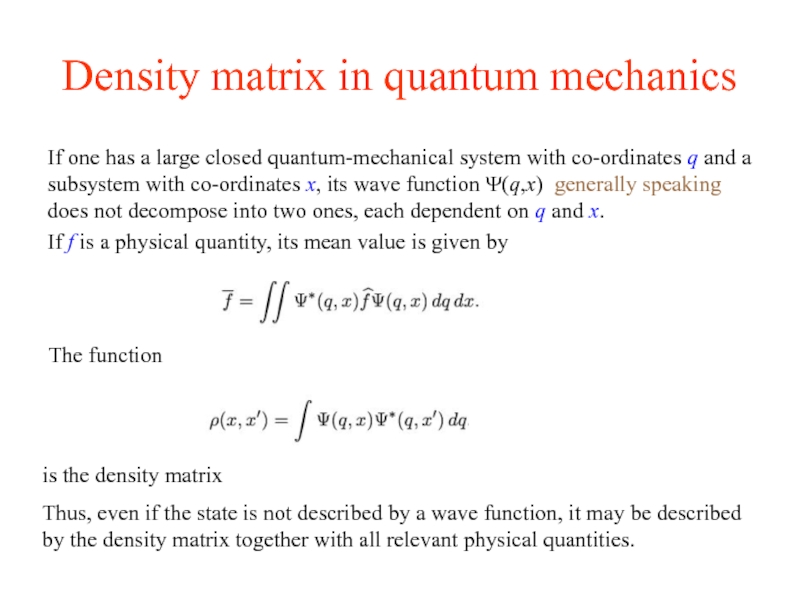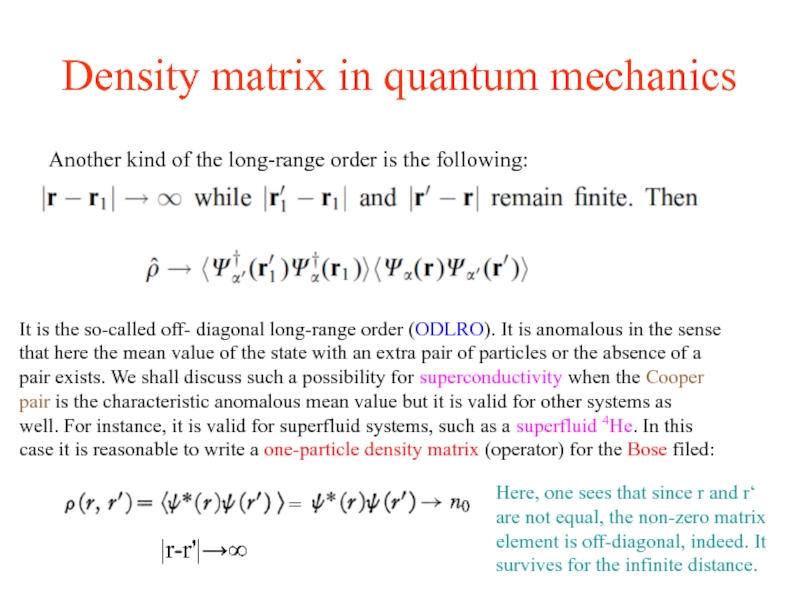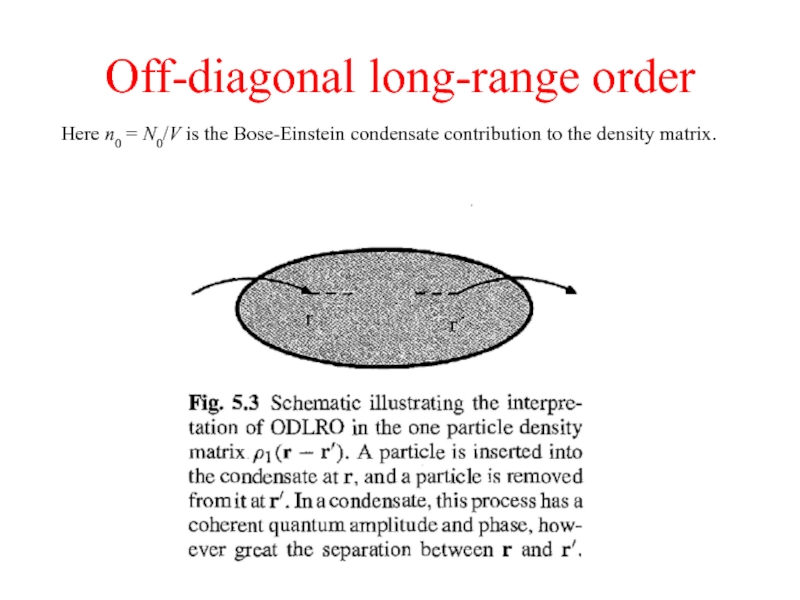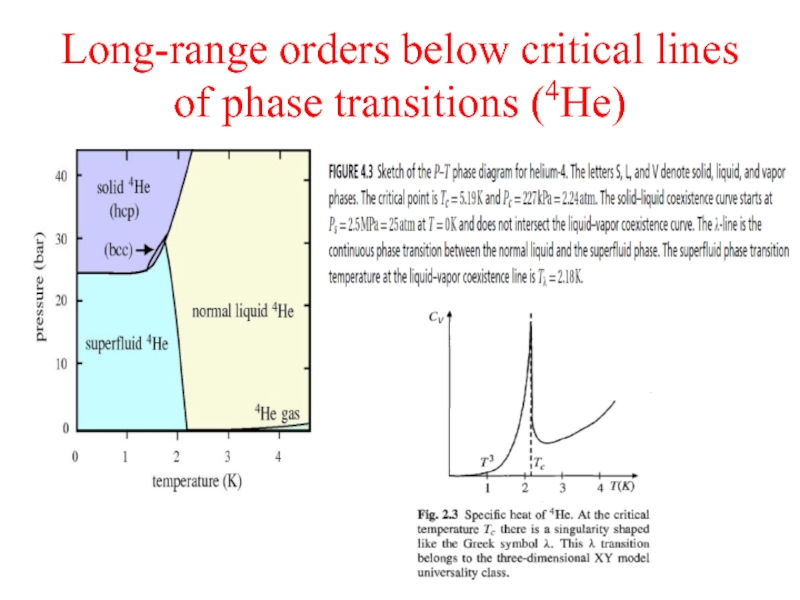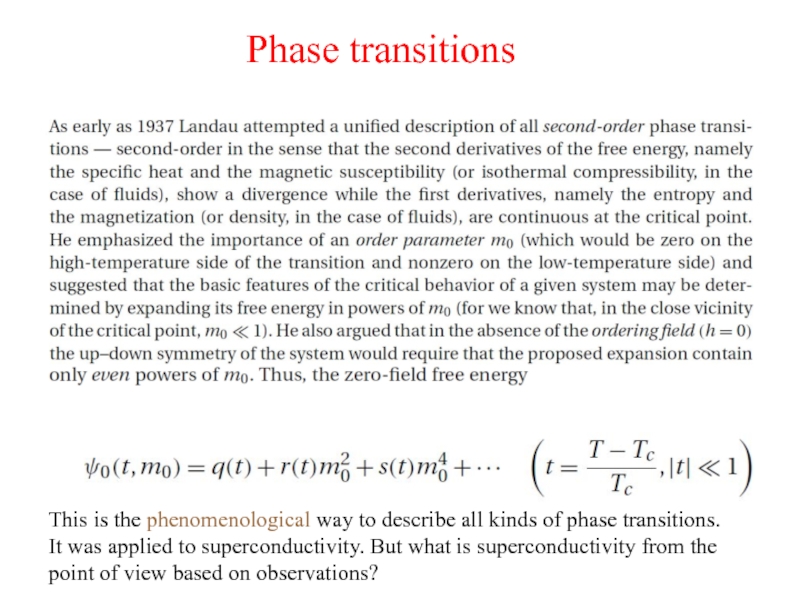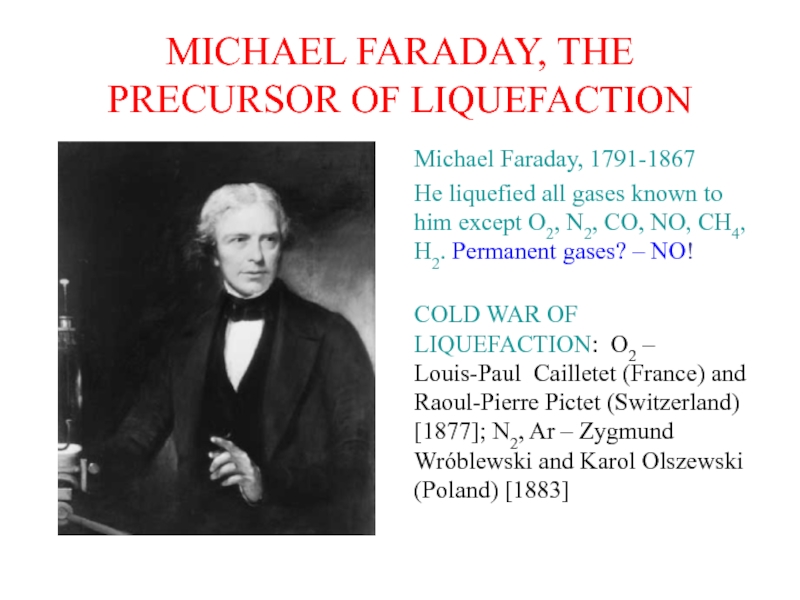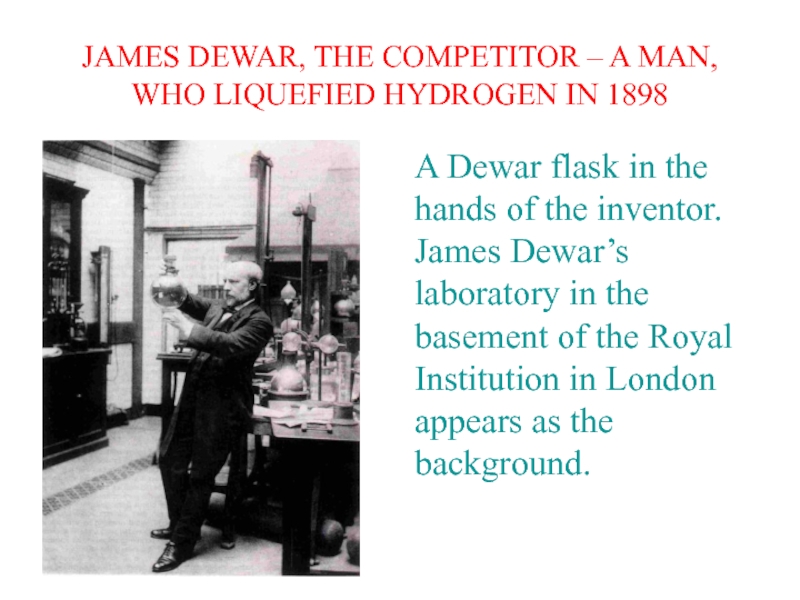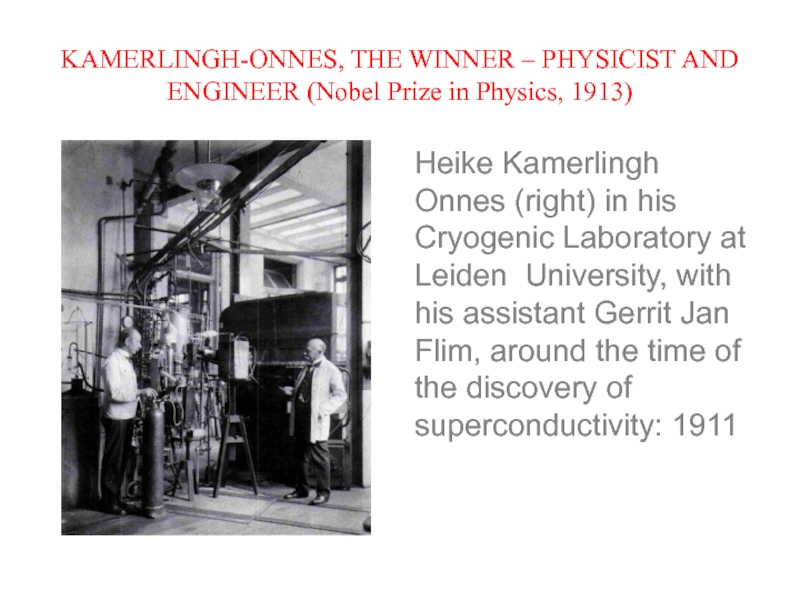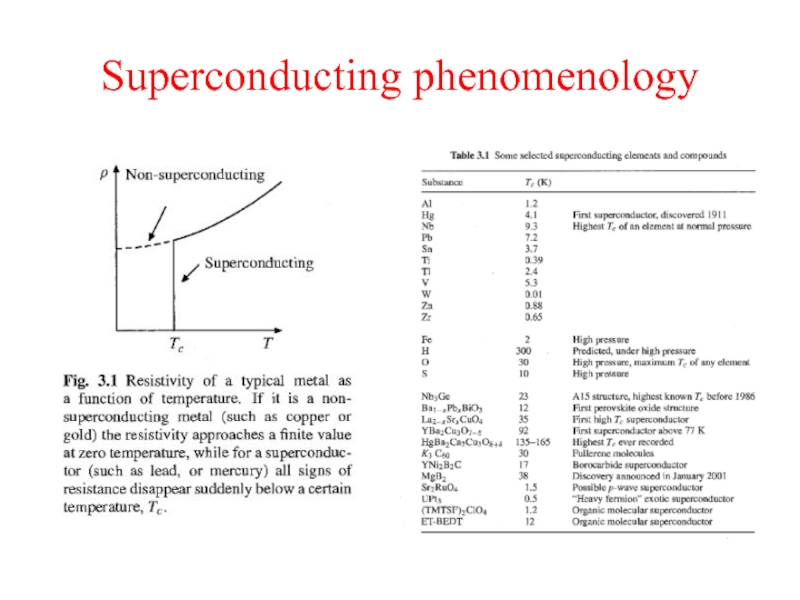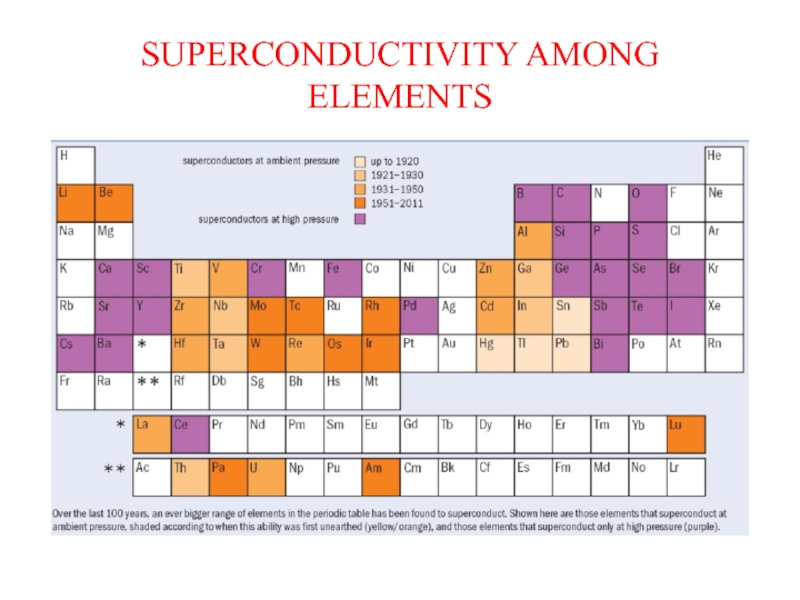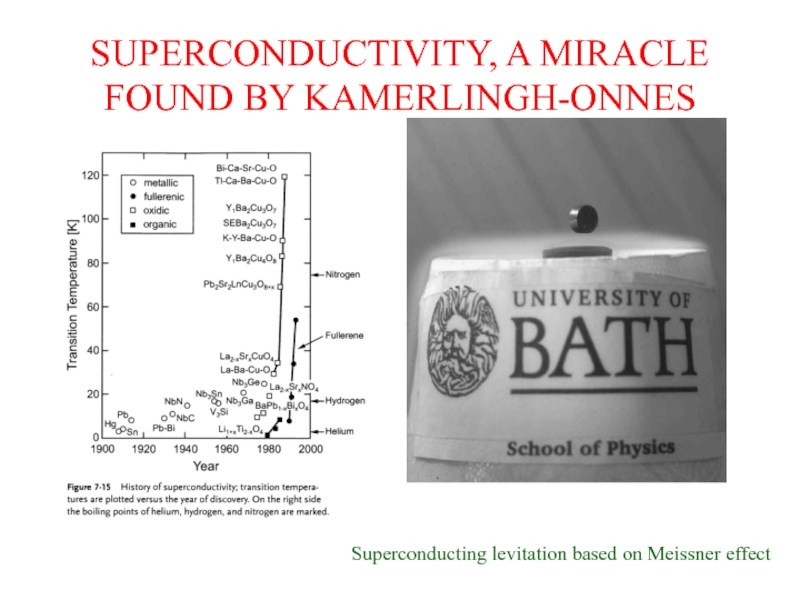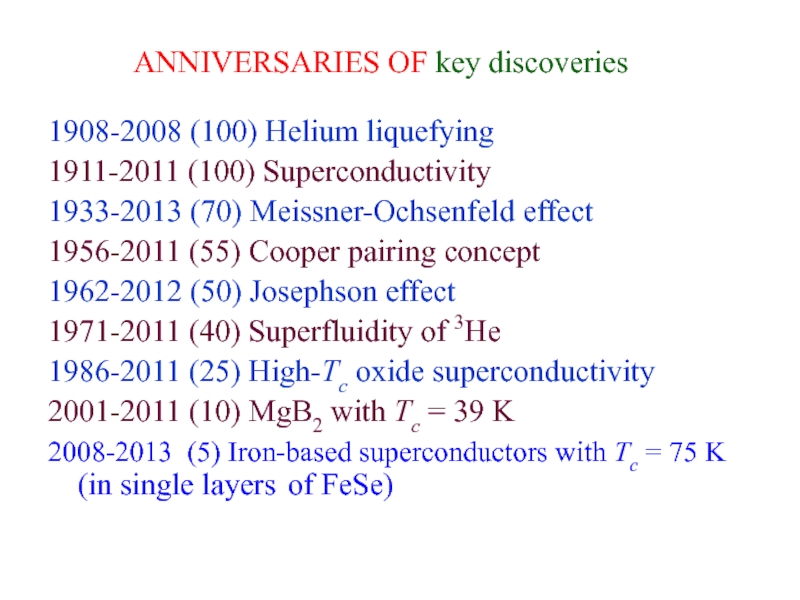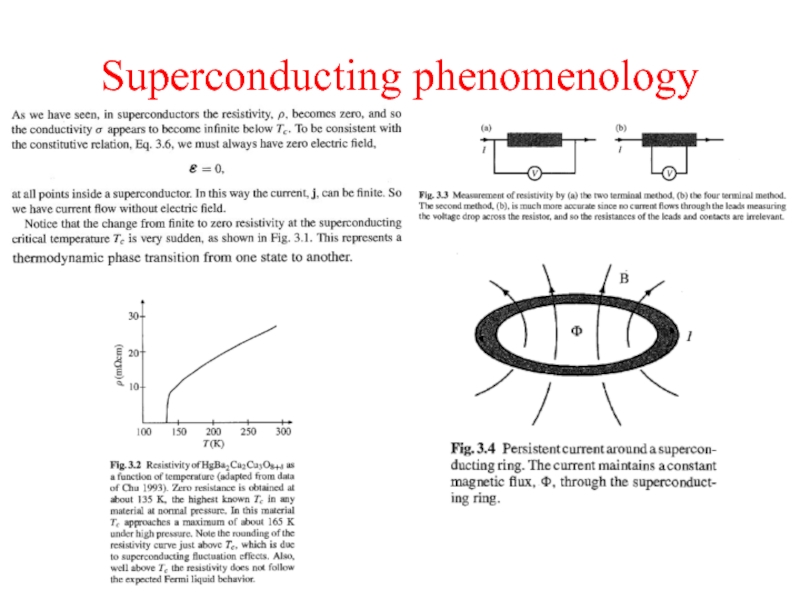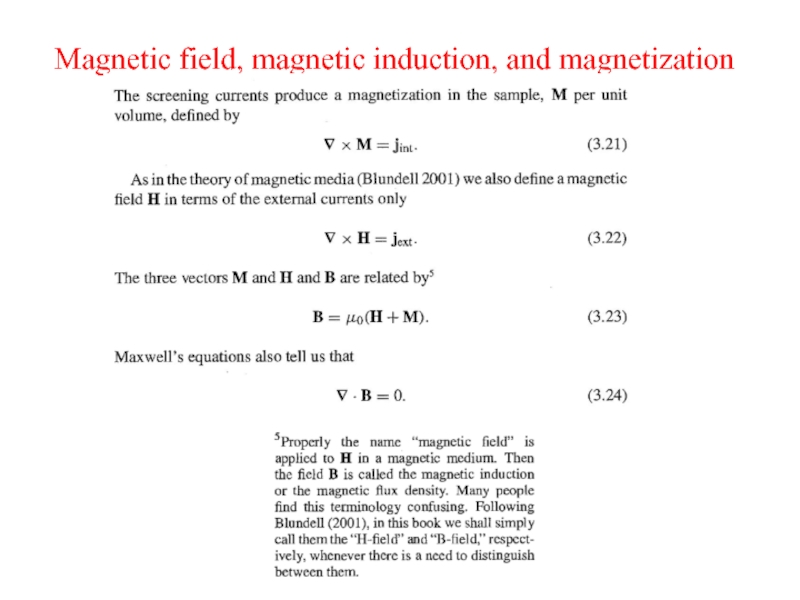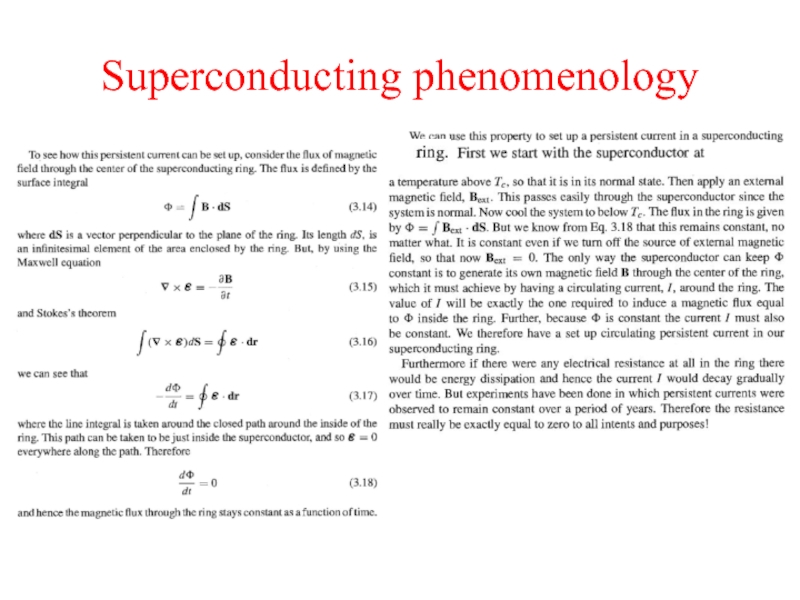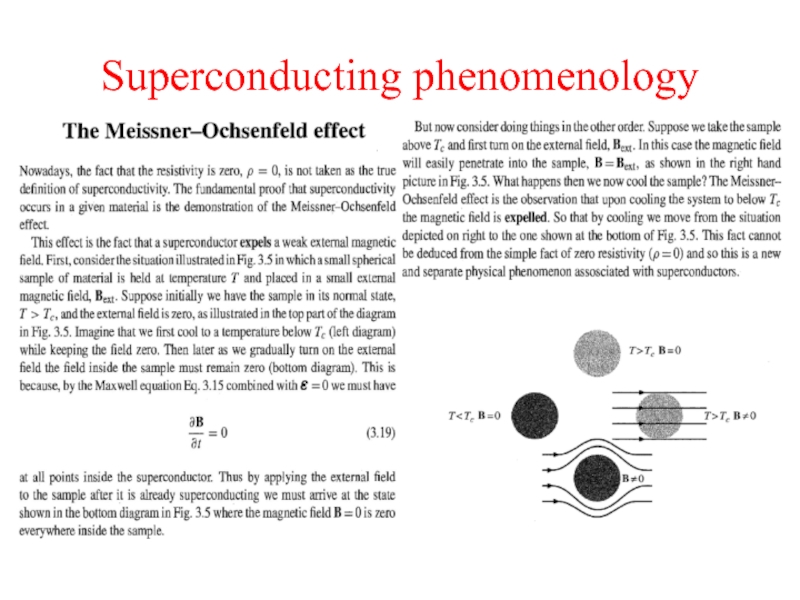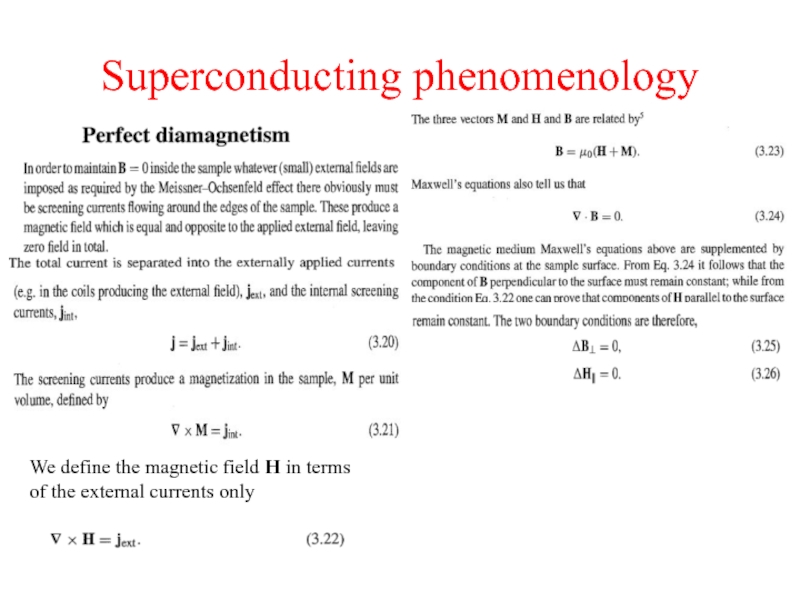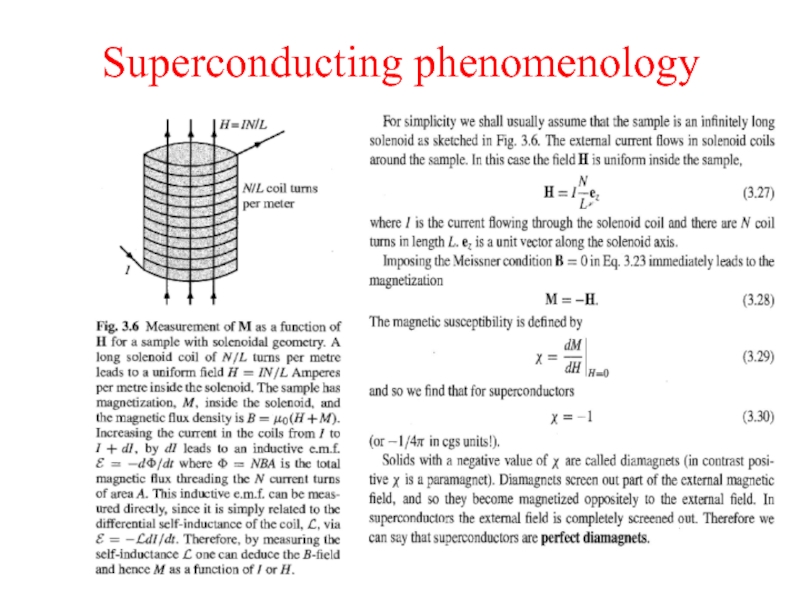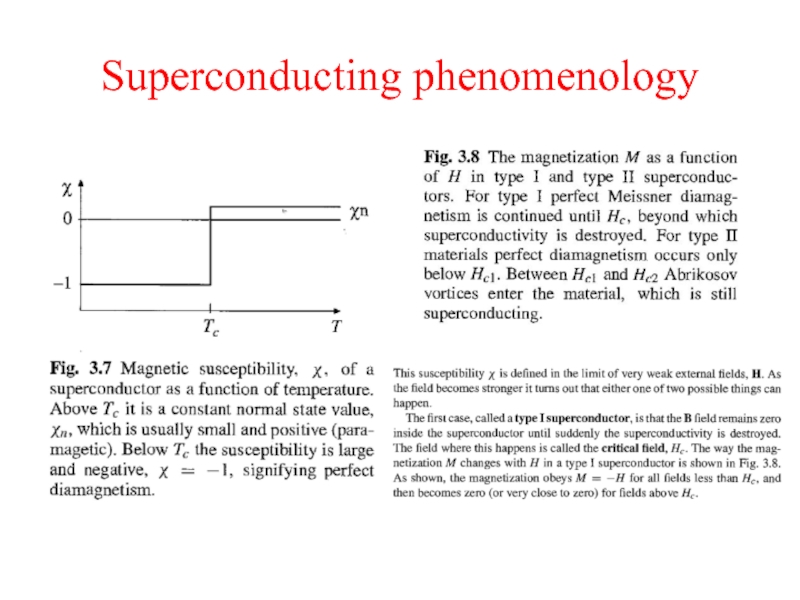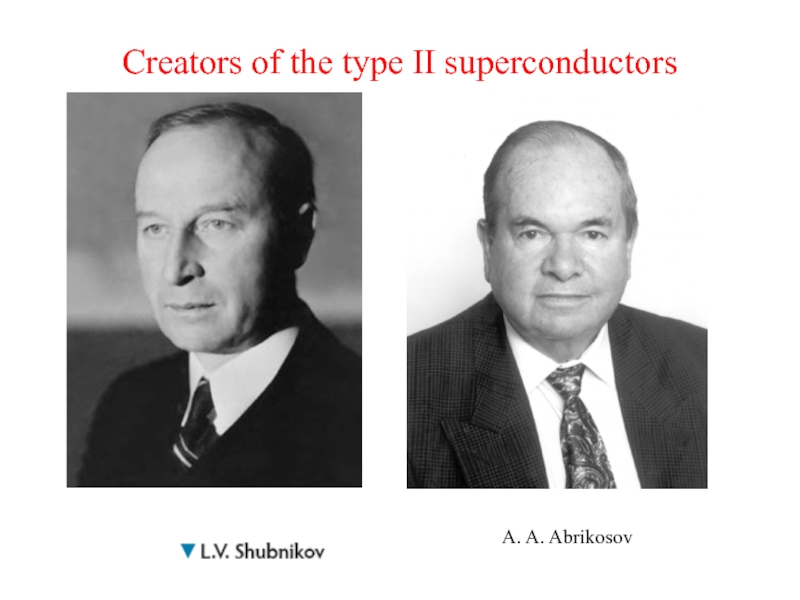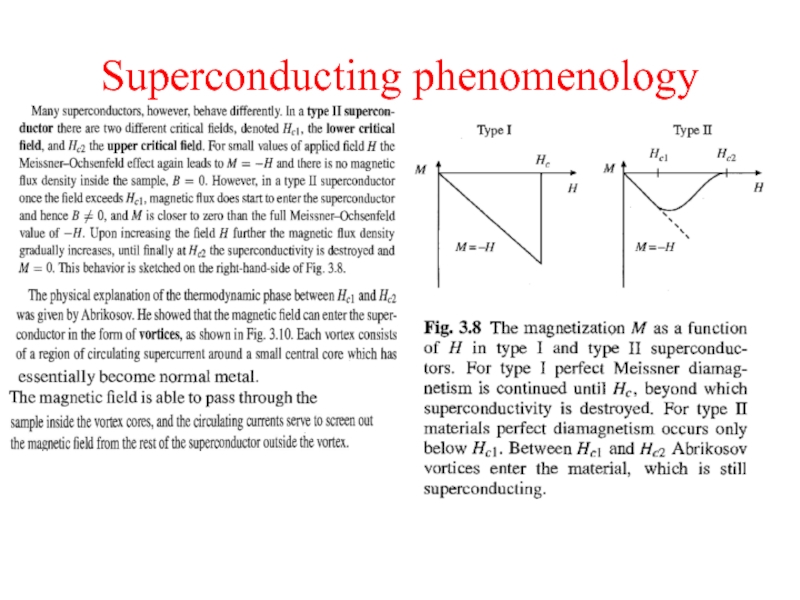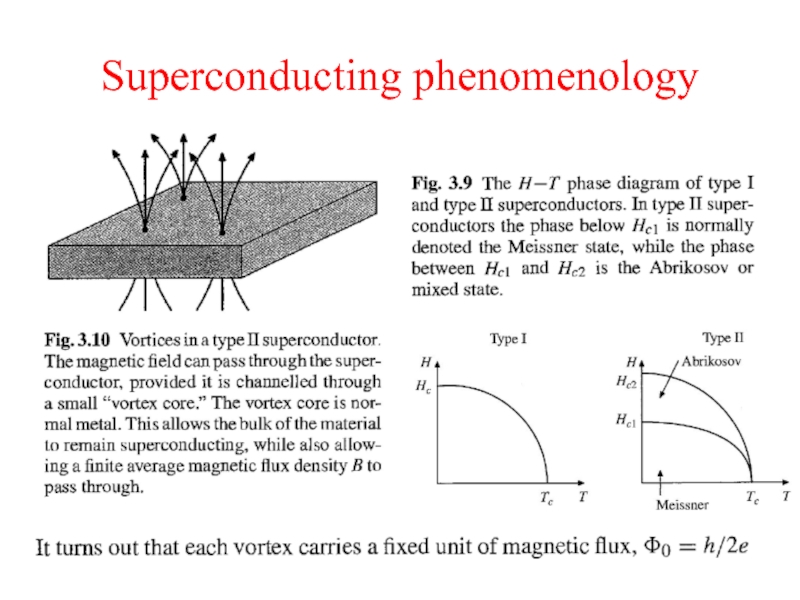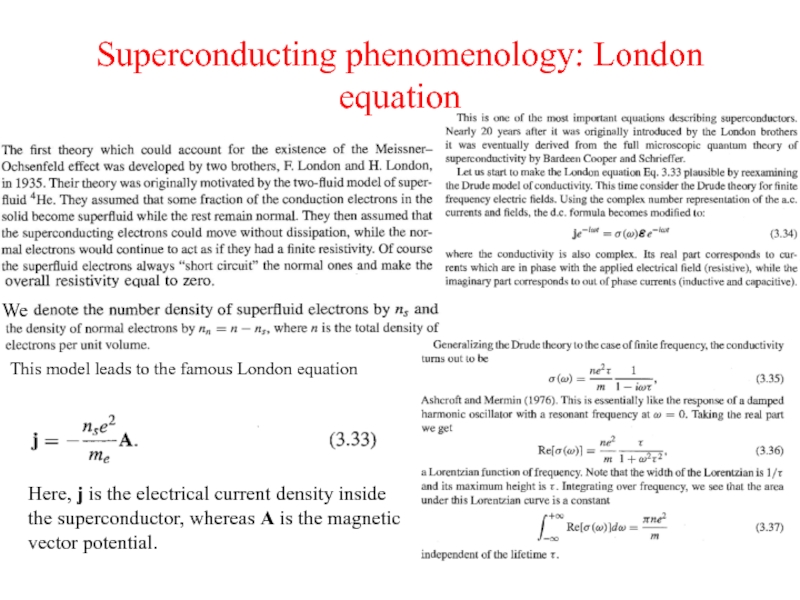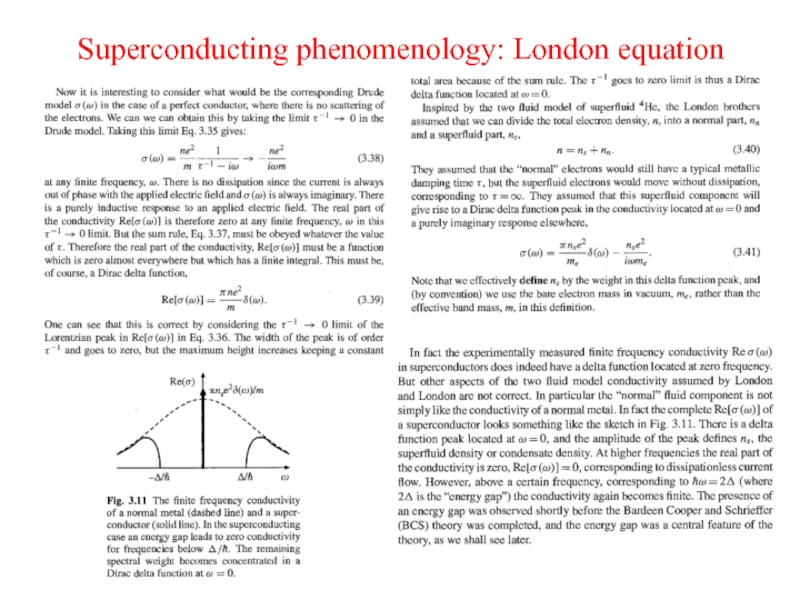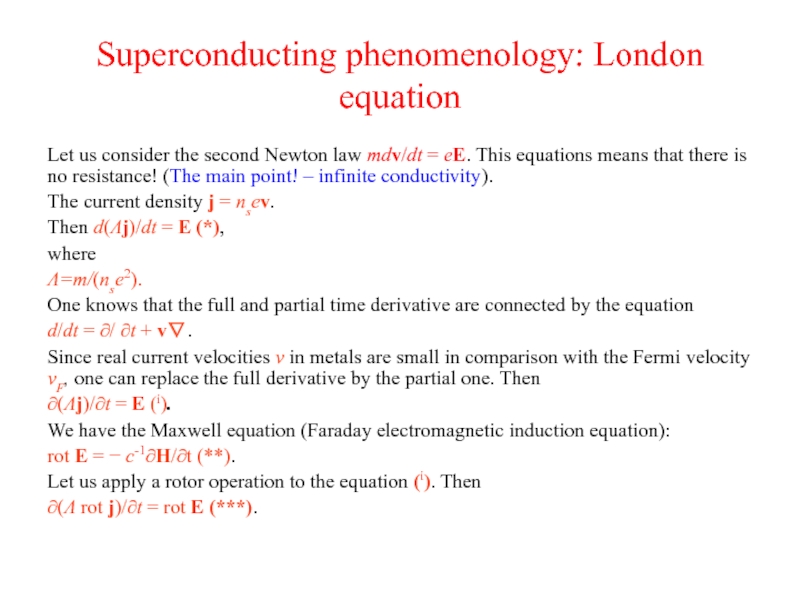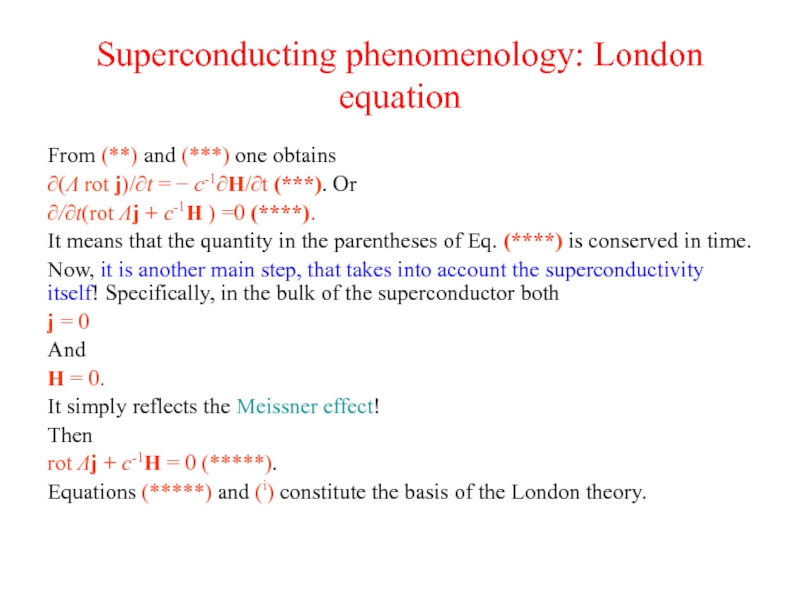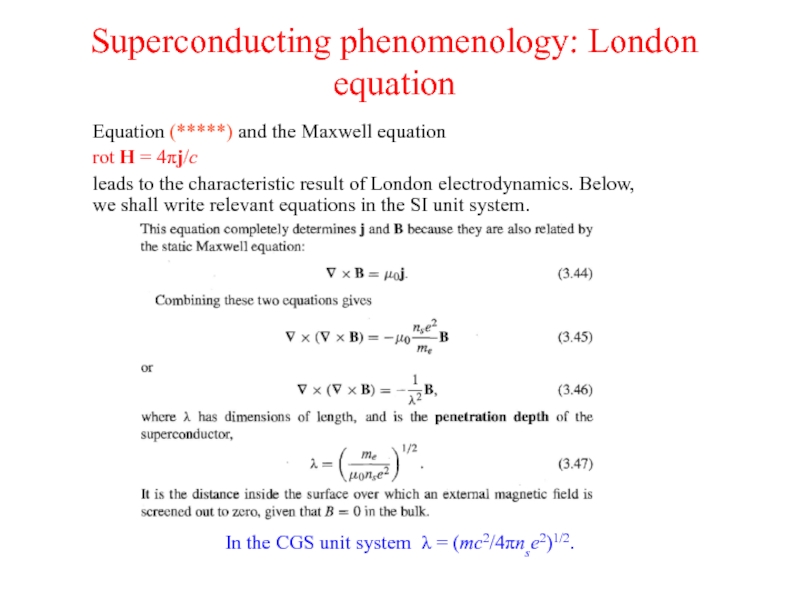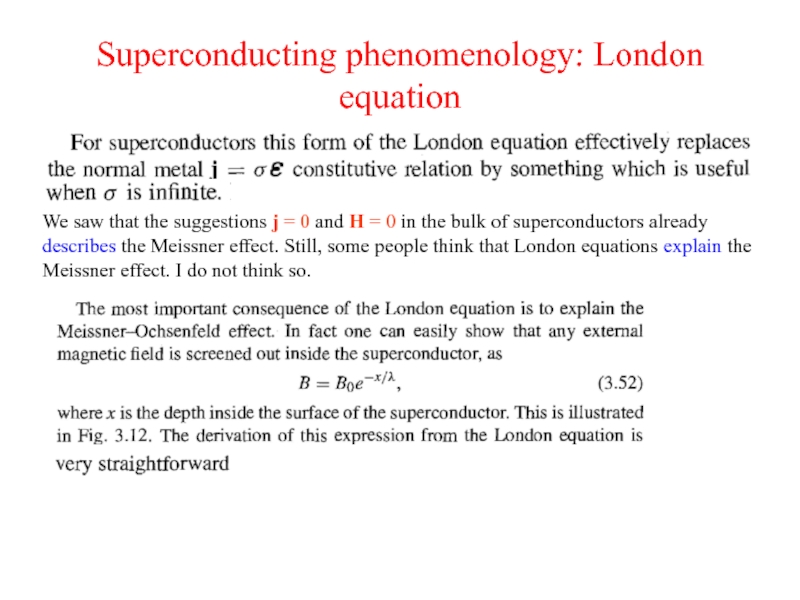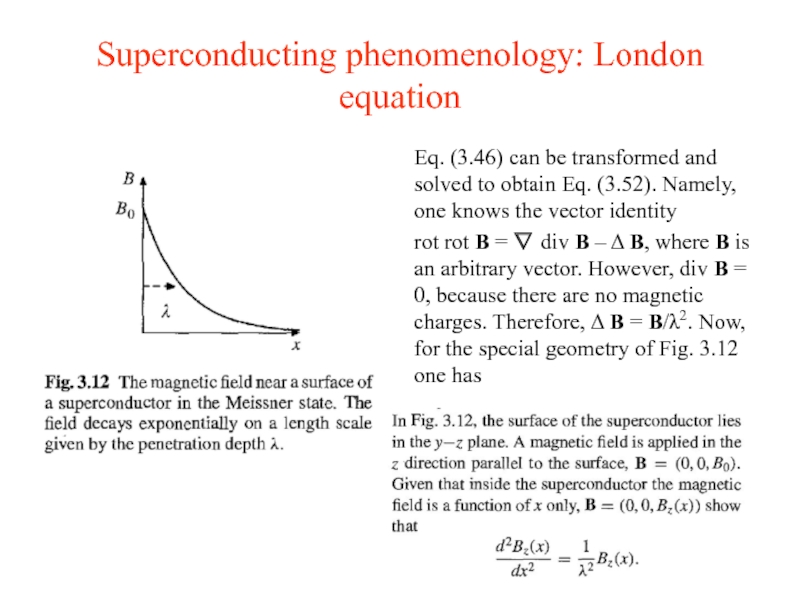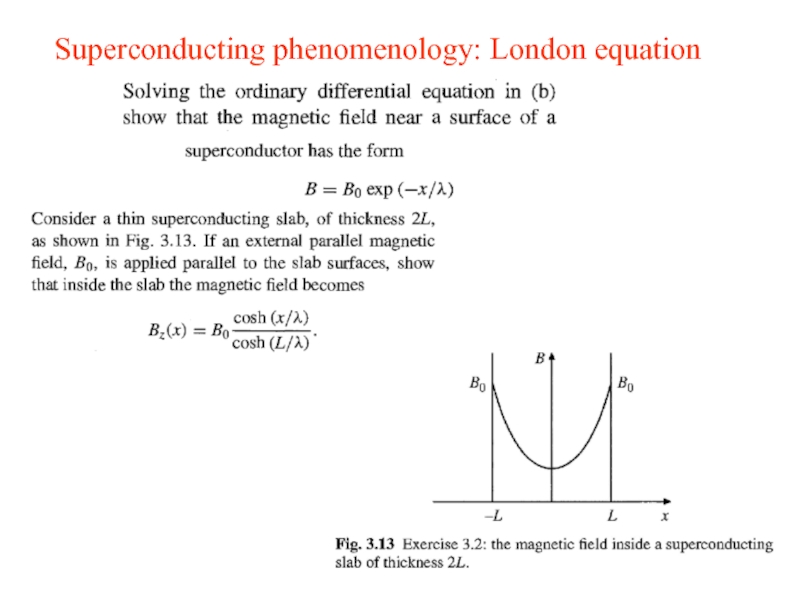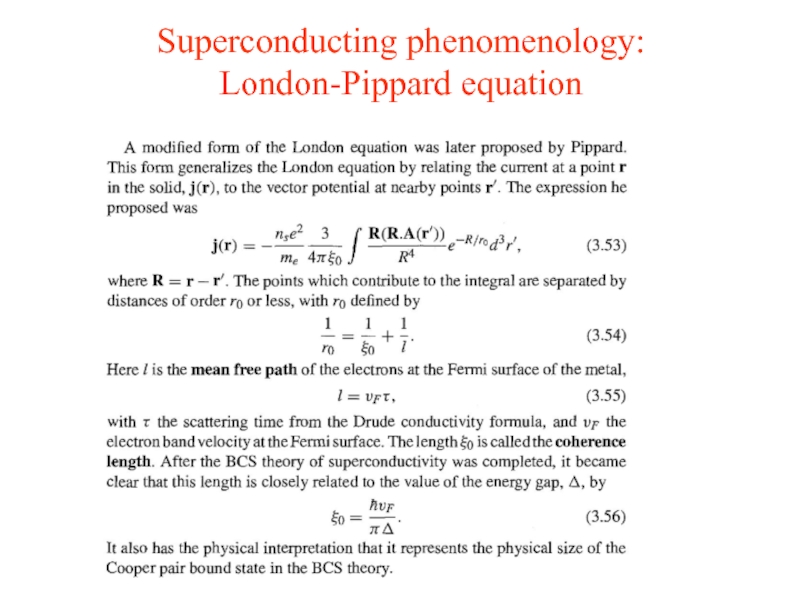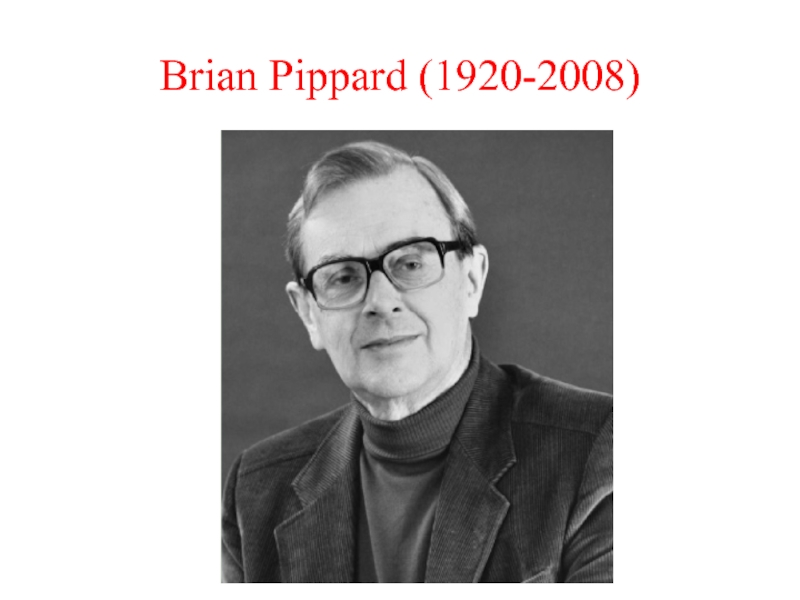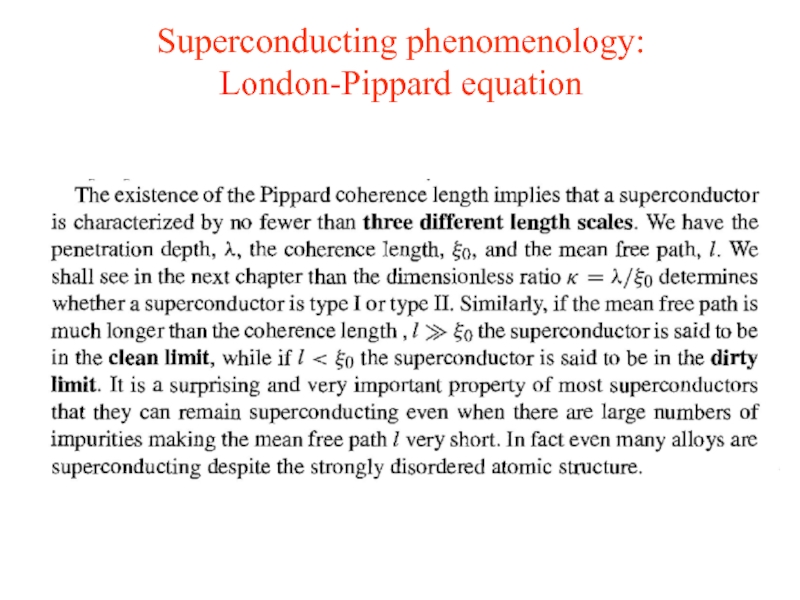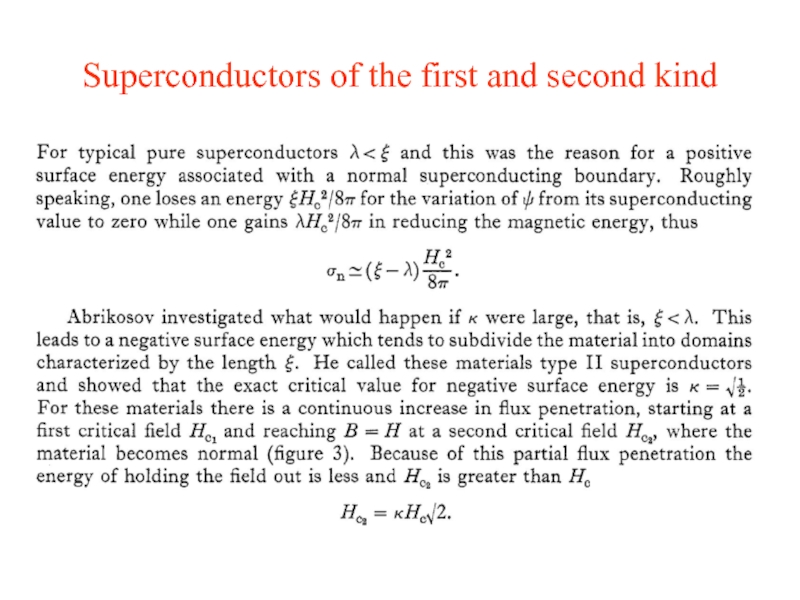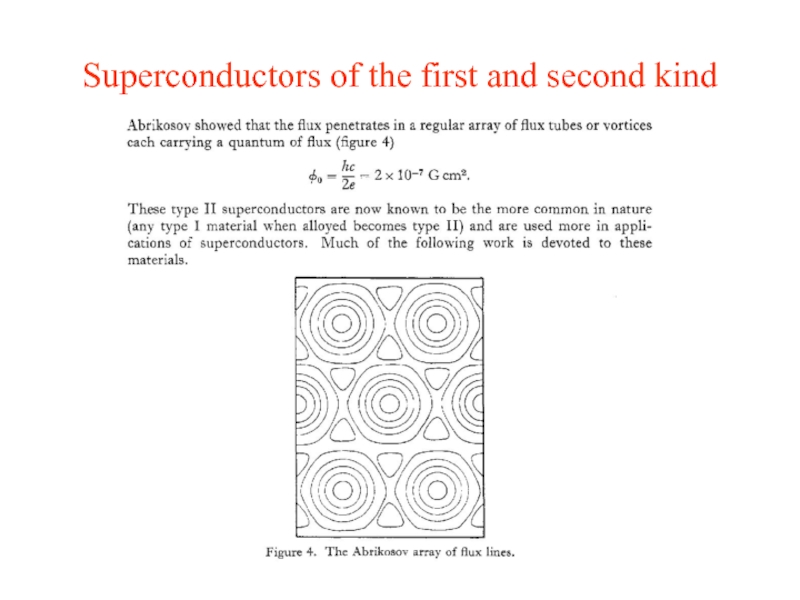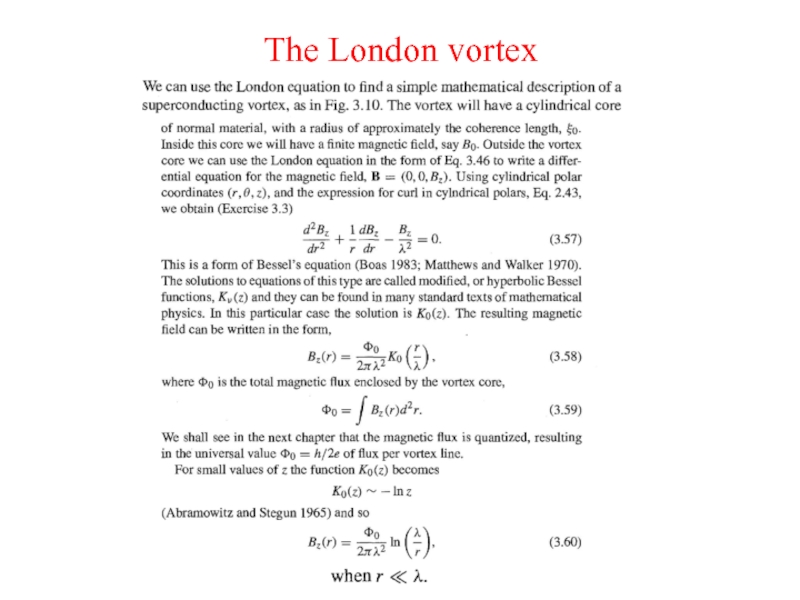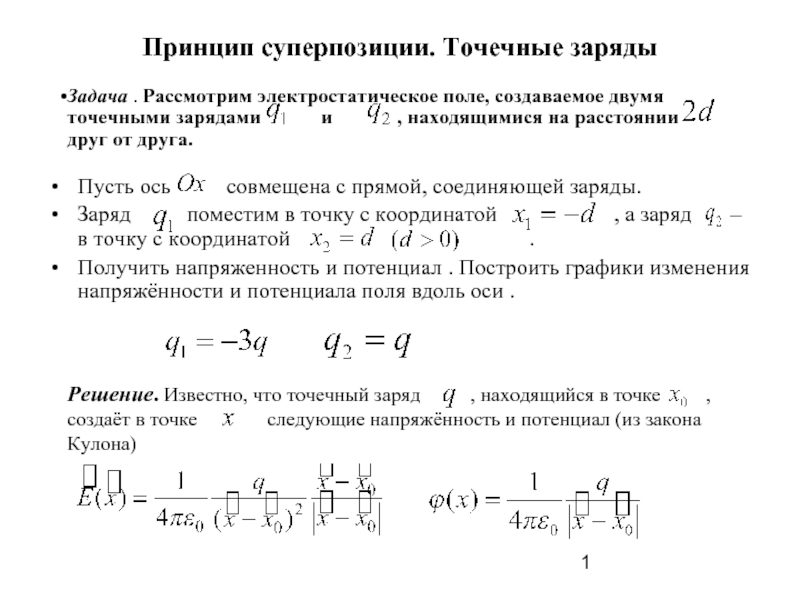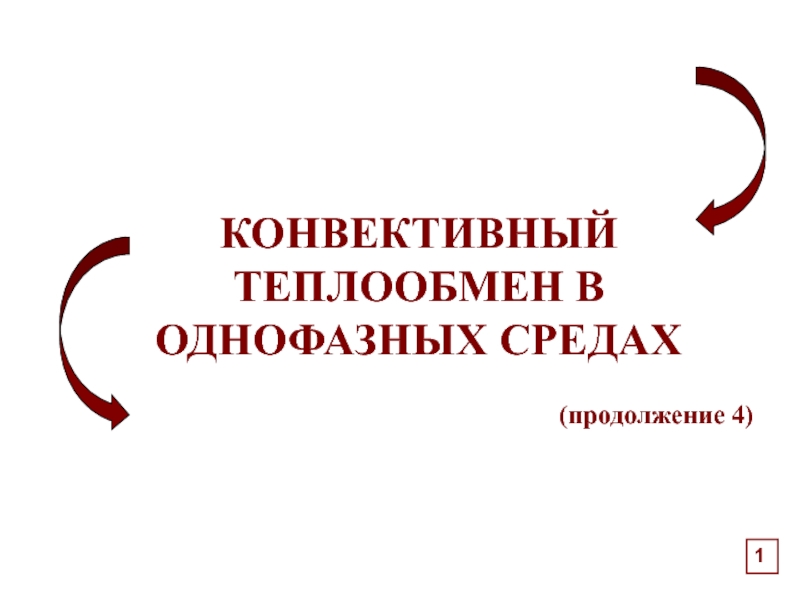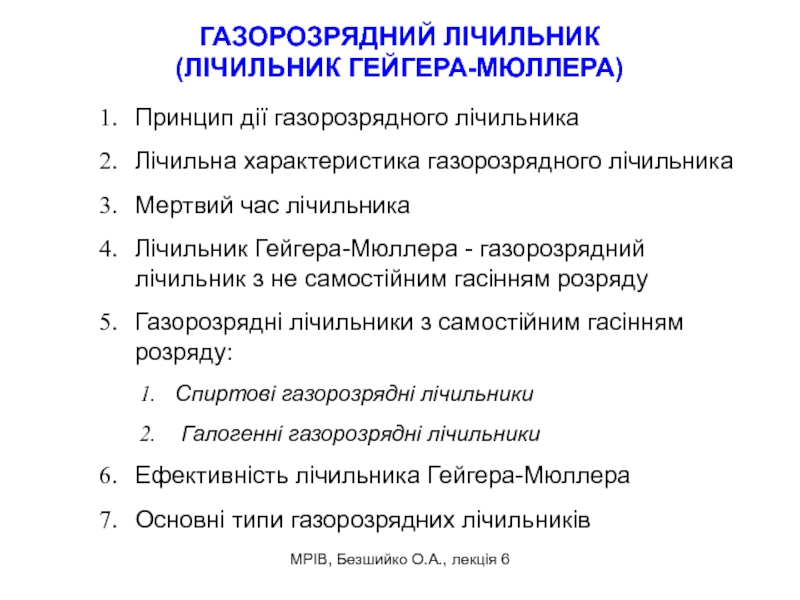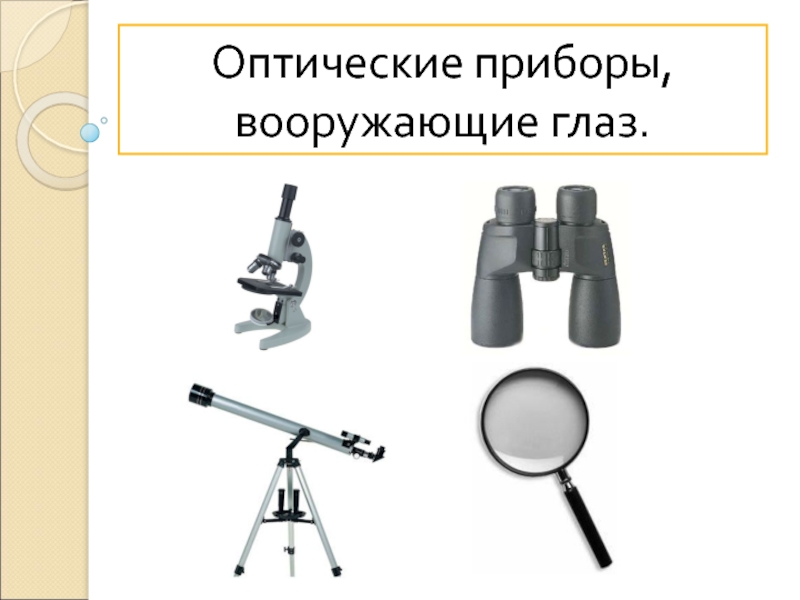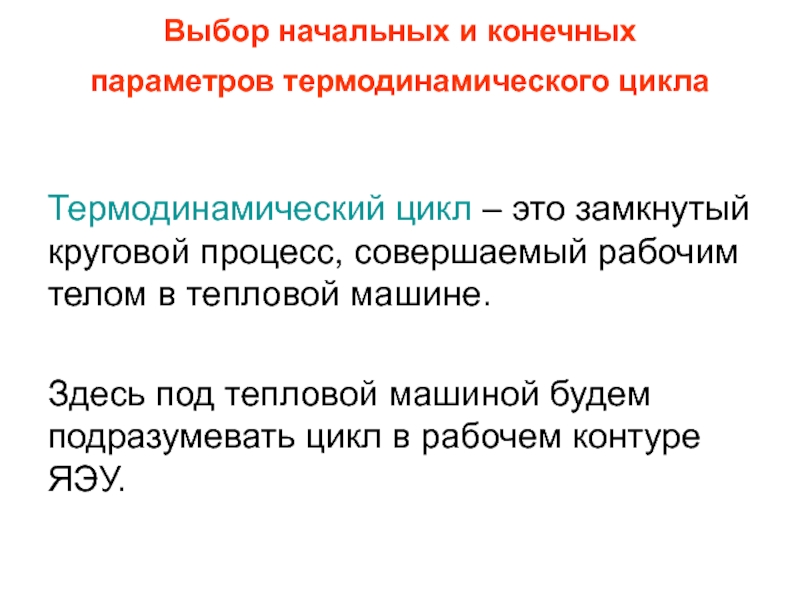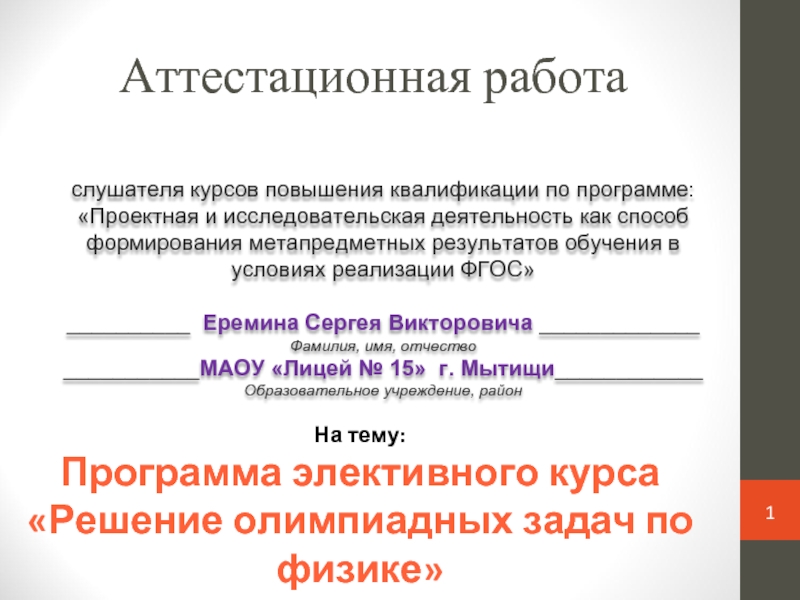- Главная
- Разное
- Дизайн
- Бизнес и предпринимательство
- Аналитика
- Образование
- Развлечения
- Красота и здоровье
- Финансы
- Государство
- Путешествия
- Спорт
- Недвижимость
- Армия
- Графика
- Культурология
- Еда и кулинария
- Лингвистика
- Английский язык
- Астрономия
- Алгебра
- Биология
- География
- Детские презентации
- Информатика
- История
- Литература
- Маркетинг
- Математика
- Медицина
- Менеджмент
- Музыка
- МХК
- Немецкий язык
- ОБЖ
- Обществознание
- Окружающий мир
- Педагогика
- Русский язык
- Технология
- Физика
- Философия
- Химия
- Шаблоны, картинки для презентаций
- Экология
- Экономика
- Юриспруденция
Long-Range Order and Superconductivity презентация
Содержание
- 1. Long-Range Order and Superconductivity
- 2. Density matrix in quantum mechanics If one
- 3. Density matrix in quantum mechanics In the
- 4. Density matrix in quantum mechanics Another kind
- 5. Off-diagonal long-range order Here n0 = N0/V
- 6. Long-range orders below critical lines of phase transitions (4He)
- 7. Phase transitions This is the phenomenological way
- 8. MICHAEL FARADAY, THE PRECURSOR OF LIQUEFACTION Michael
- 9. JAMES DEWAR, THE COMPETITOR – A MAN,
- 10. KAMERLINGH-ONNES, THE WINNER – PHYSICIST AND ENGINEER
- 11. LOW TEMPERATURE STUDIES USING LIQUID HELIUM LED
- 12. Superconducting phenomenology
- 13. SUPERCONDUCTIVITY AMONG ELEMENTS
- 14. SUPERCONDUCTIVITY, A MIRACLE FOUND BY KAMERLINGH-ONNES Superconducting levitation based on Meissner effect
- 15. ANNIVERSARIES OF key discoveries 1908-2008 (100) Helium
- 16. PHENOMENOLOGY. NORMAL METALS
- 17. Superconducting phenomenology
- 18. Magnetic field, magnetic induction, and magnetization
- 19. Superconducting phenomenology
- 20. Superconducting phenomenology
- 21. Superconducting phenomenology We define the magnetic field
- 22. Superconducting phenomenology
- 23. Superconducting phenomenology
- 24. Creators of the type II superconductors A. A. Abrikosov
- 25. Superconducting phenomenology
- 26. Superconducting phenomenology
- 27. Superconducting phenomenology: London equation We This model
- 28. Superconducting phenomenology: London equation
- 29. Superconducting phenomenology: London equation Let us consider
- 30. Superconducting phenomenology: London equation From (**) and
- 31. Superconducting phenomenology: London equation Equation (*****) and
- 32. Superconducting phenomenology: London equation From (3.48) and Eq. (*****) one obtains
- 33. Superconducting phenomenology: London equation We saw
- 34. Superconducting phenomenology: London equation Eq. (3.46) can
- 35. Superconducting phenomenology: London equation
- 36. Superconducting phenomenology: London-Pippard equation
- 37. Brian Pippard (1920-2008)
- 38. Superconducting phenomenology: London-Pippard equation
- 39. Superconductors of the first and second kind
- 40. Superconductors of the first and second kind
- 41. The London vortex
Слайд 2Density matrix in quantum mechanics
If one has a large closed quantum-mechanical
If f is a physical quantity, its mean value is given by
The function
is the density matrix
Thus, even if the state is not described by a wave function, it may be described
by the density matrix together with all relevant physical quantities.
Слайд 3Density matrix in quantum mechanics
In the pure case, when the system
One can generalize this formalism to the case of two or more particles
The two-particle density particle can be factorized in such a way:
It means that we have a so-called diagonal long-range order (DLRO). For instance, one can
take a charge-density-wave order as an example. In this case, the wave operators are the Fermi ones. The coupling is between electrons and holes (excitonic dielectric) or different branches of the same one-dimensional Fermi surface (Peierls dielectric). If α' = α, one has a simple crystalline order.
Слайд 4Density matrix in quantum mechanics
Another kind of the long-range order is
It is the so-called off- diagonal long-range order (ODLRO). It is anomalous in the sense
that here the mean value of the state with an extra pair of particles or the absence of a
pair exists. We shall discuss such a possibility for superconductivity when the Cooper
pair is the characteristic anomalous mean value but it is valid for other systems as
well. For instance, it is valid for superfluid systems, such as a superfluid 4He. In this
case it is reasonable to write a one-particle density matrix (operator) for the Bose filed:
=
Here, one sees that since r and r‘
are not equal, the non-zero matrix
element is off-diagonal, indeed. It
survives for the infinite distance.
|r-r'|→∞
Слайд 5Off-diagonal long-range order
Here n0 = N0/V is the Bose-Einstein condensate contribution
Слайд 7Phase transitions
This is the phenomenological way to describe all kinds of
It was applied to superconductivity. But what is superconductivity from the
point of view based on observations?
Слайд 8MICHAEL FARADAY, THE PRECURSOR OF LIQUEFACTION
Michael Faraday, 1791-1867
He liquefied all gases
COLD WAR OF LIQUEFACTION: O2 – Louis-Paul Cailletet (France) and Raoul-Pierre Pictet (Switzerland) [1877]; N2, Ar – Zygmund Wróblewski and Karol Olszewski (Poland) [1883]
Слайд 9JAMES DEWAR, THE COMPETITOR – A MAN, WHO LIQUEFIED HYDROGEN IN
A Dewar flask in the hands of the inventor. James Dewar’s laboratory in the basement of the Royal Institution in London appears as the background.
Слайд 10KAMERLINGH-ONNES, THE WINNER – PHYSICIST AND ENGINEER (Nobel Prize in Physics,
Heike Kamerlingh Onnes (right) in his Cryogenic Laboratory at Leiden University, with his assistant Gerrit Jan Flim, around the time of the discovery of superconductivity: 1911
Слайд 11LOW TEMPERATURE STUDIES USING LIQUID HELIUM LED TO NEW DISCOVERIES: NOT
Phase transition in Hg resistance,
Dewar (1896)
Superconducting
transition for
Tl-based oxides
on different
Substrates
Lee (1991)
Crystallization waves on many-facet
surfaces of 4He crystals
Balibar (1994)
Слайд 14SUPERCONDUCTIVITY, A MIRACLE FOUND BY KAMERLINGH-ONNES
Superconducting levitation based on Meissner effect
Слайд 15ANNIVERSARIES OF key discoveries
1908-2008 (100) Helium liquefying
1911-2011 (100) Superconductivity
1933-2013 (70) Meissner-Ochsenfeld
1956-2011 (55) Cooper pairing concept
1962-2012 (50) Josephson effect
1971-2011 (40) Superfluidity of 3He
1986-2011 (25) High-Tc oxide superconductivity
2001-2011 (10) MgB2 with Tc = 39 K
2008-2013 (5) Iron-based superconductors with Tc = 75 K (in single layers of FeSe)
Слайд 21Superconducting phenomenology
We define the magnetic field H in terms
of the
Слайд 27Superconducting phenomenology: London equation
We
This model leads to the famous London equation
Here,
the superconductor, whereas A is the magnetic
vector potential.
Слайд 29Superconducting phenomenology: London equation
Let us consider the second Newton law mdv/dt
The current density j = nsev.
Then d(Λj)/dt = E (*),
where
Λ=m/(nse2).
One knows that the full and partial time derivative are connected by the equation
d/dt = ∂/ ∂t + v∇.
Since real current velocities v in metals are small in comparison with the Fermi velocity vF, one can replace the full derivative by the partial one. Then
∂(Λj)/∂t = E (i).
We have the Maxwell equation (Faraday electromagnetic induction equation):
rot E = − c-1∂H/∂t (**).
Let us apply a rotor operation to the equation (i). Then
∂(Λ rot j)/∂t = rot E (***).
Слайд 30Superconducting phenomenology: London equation
From (**) and (***) one obtains
∂(Λ rot j)/∂t
∂/∂t(rot Λj + c-1H ) =0 (****).
It means that the quantity in the parentheses of Eq. (****) is conserved in time.
Now, it is another main step, that takes into account the superconductivity itself! Specifically, in the bulk of the superconductor both
j = 0
And
H = 0.
It simply reflects the Meissner effect!
Then
rot Λj + c-1H = 0 (*****).
Equations (*****) and (i) constitute the basis of the London theory.
Слайд 31Superconducting phenomenology: London equation
Equation (*****) and the Maxwell equation
rot H =
leads to the characteristic result of London electrodynamics. Below, we shall write relevant equations in the SI unit system.
In the CGS unit system λ = (mc2/4πnse2)1/2.
Слайд 33Superconducting phenomenology: London equation
We saw that the suggestions j = 0
Слайд 34Superconducting phenomenology: London equation
Eq. (3.46) can be transformed and solved to
rot rot B = ∇ div B – Δ B, where B is an arbitrary vector. However, div B = 0, because there are no magnetic charges. Therefore, Δ B = B/λ2. Now, for the special geometry of Fig. 3.12 one has
